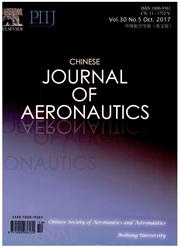

 中文摘要:
中文摘要:
本文目的在于验证所开发的适用于涡轮气热耦合模拟的计算程序,并研究转捩对气热耦合计算结果影响。首先在流场求解程序HIT-3D中加入考虑转捩影响的q-ω低雷诺数二方程模型以及AGS代数转捩模型模块,然后采用直接耦合方法关联HIT-3D与自主开发的温度场求解程序,使新程序具备气热耦合求解功能。选取MarkⅡ叶片的三个不同试验工况作为验证算例,在计算中考虑管内流动影响,并对流道内流动分别采用了B-L代数模型、q-ω二方程模型以及B-L&AGS模型,而对管内流动则分别采用了B-L模型与B-L&AGS模型。计算表明采用各模型预测的压力分布与试验吻合较好,而在层流转捩区域采用B-L&AGS模型预测的温度分布与实验吻合最好,而在湍流流动区域,各模型预测的温度分布接近。这一方面表明所开发程序具备较准确进行内冷涡轮气热耦合计算的能力,另一方面也证明了考虑转捩影响对提高气热耦合计算精度的重要性。
 英文摘要:
英文摘要:
The investigation is intended to verify a coupled solver developed for turbines to illustrate how transition exerts effects on the predicted thermal loads. The solver couples the N-S solver named HIT-3D, with a thermal conduction module using the finite difference method. Three operating conditions of the NASA-MarkII vane are selected to be the cases for tests. The models used in the simulations include Baldwin-Lomax (B-L) algebraic model, q-ω low-Re model and B-L & Abu-Ghannam and Shaw (AGS) model. The pre...
 同期刊论文项目
同期刊论文项目
 同项目期刊论文
同项目期刊论文
 期刊信息
期刊信息
